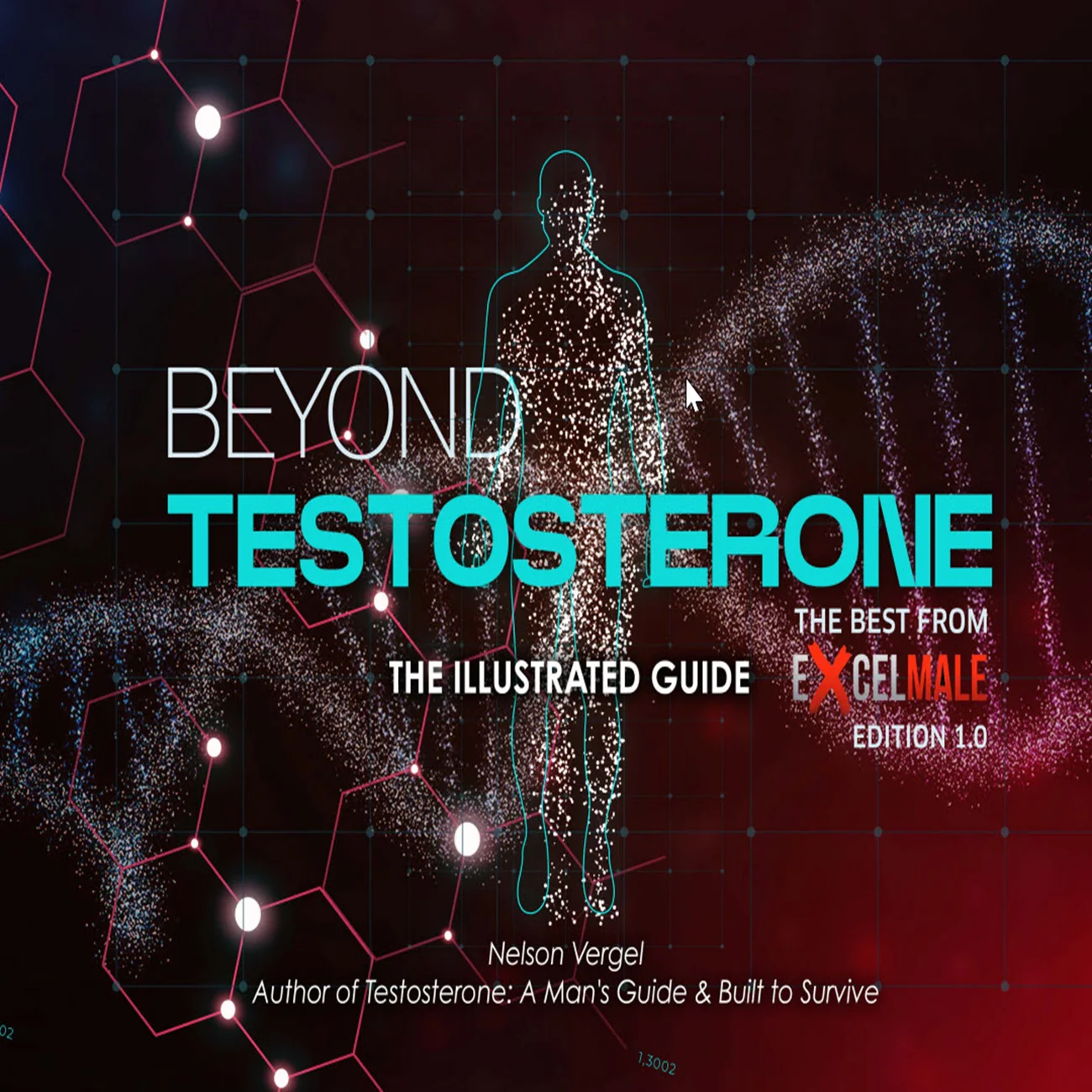just signed up with Defy (been on TRT for about 5 years now)- looking forward to trying nandrolone as a base or split with testosterone. What are some of the protocols that work well with nandrolone - 50/50 split nandrolone/test, 75/25? 100% nandrolone? Would I still need to take anastrozole? I am assuming I will also still be on HCG to keep the nads happy
_______________________
Today, its FDA-approved medical use in the United States is primarily for treating anemia. However, it is frequently used off-label to preserve lean mass in HIV-positive patients and others suffering from wasting diseases. Outside the U.S., it is still supported for severe anemia, osteoporosis, and advanced breast cancer. It's also increasingly prescribed in conjunction with Testosterone Replacement Therapy (TRT) for its potential to alleviate joint pain and improve musculoskeletal health in men with hypogonadism.
In the U.S., while previously largely phased out by pharmaceutical companies, there has been a resurgence of interest. It is now being legally prescribed through compounding pharmacies (like Empower Pharmacy) as a controlled substance (Schedule III). Prescribing it off-label is legal when supported by evidence, and medical professionals are increasingly utilizing it in conjunction with TRT for conditions like joint pain and muscle wasting, often citing supporting studies from institutions like Baylor College of Medicine. Despite this, regulatory agencies still impose restrictions, and black market counterfeits are common, emphasizing the need for medical supervision and legitimate sources.
_______________________
Briefing Document: Nandrolone in Men's Health and Testosterone Replacement Therapy (TRT)
Introduction
This briefing document synthesizes information from various sources on ExcelMale.com, a prominent online forum for men's health. It focuses on Nandrolone (Deca-Durabolin), an anabolic-androgenic steroid (AAS), particularly its use as an adjunct to Testosterone Replacement Therapy (TRT) for men with hypogonadism. The document covers its history, therapeutic benefits, physiological mechanisms, potential risks, administration protocols, and current accessibility.1. Overview of Nandrolone (Deca-Durabolin)
1.1 Description and History
Nandrolone decanoate is an injectable anabolic steroid, structurally similar to testosterone but lacking a carbon atom at the 19th position, hence its alternative name, 19-nortestosterone. It was first described in 1960 and became a prescription medication in 1962, developed by Organon under the brand name Deca-Durabolin. The decanoate ester allows for a slow release from the injection site, lasting up to three weeks, and gives it a half-life of 7-12 days.1.2 Early and Modern Medical Applications
Originally, nandrolone decanoate was prescribed for a wide range of conditions, including:- Pre- and postoperative lean mass building
- Osteoporosis
- Advanced breast cancer
- Weight loss due to convalescence or disease
- Geriatric frailty
- Burns, severe trauma, and ulcers
- Adjunct therapy for certain anemias
- Growth and development retardation in children
2. Therapeutic Benefits of Nandrolone
Nandrolone exhibits strong anabolic properties with weak androgenic effects, making it a popular choice for promoting strength and lean muscle mass gains. Its key benefits, particularly when combined with TRT, include:2.1 Enhanced Musculoskeletal Health
- Increased Muscle Mass and Strength: Nandrolone has a high anabolic-to-androgenic ratio (estimated at nearly 11:1 or 10:1), making it highly effective for promoting protein synthesis and increasing lean muscle mass and strength compared to testosterone alone. Users report "accelerated recovery from injuries and improved workout performance."
- Faster Injury Recovery: Anabolic effects also include improved recovery times from injuries, making it favored in sports medicine and rehabilitation. It enhances collagen synthesis (up to 250%) and promotes type I muscle fiber hypertrophy, improving muscular endurance. Preclinical data supports its efficacy in improving tendon repair and reducing inflammation in rotator cuff injuries.
- Enhanced Bone Density: Nandrolone positively affects bone density, which is crucial for the elderly or those at risk of osteoporosis. Long-term users have shown 5-7% greater lumbar spine bone mineral density (BMD) compared to testosterone-only groups.
2.2 Joint Pain Relief and Functional Improvement
- Many users, including those with athletic backgrounds, report "significant relief from joint discomfort." A novel prospective pilot study presented at a Urology conference in 2018 found that hypogonadal men receiving nandrolone decanoate experienced a 44% reduction in joint pain scores and a decreased need for pain medication in 36.4% of patients within 8 weeks. This effect is attributed to increased synovial fluid viscosity and inhibition of cartilage-degrading enzymes.
- "Powerlifters on the platform reported returning to 90% of pre-injury lifting capacity 3–4 weeks faster when incorporating nandrolone."
3. Administration and Dosing Protocols
3.1 Dosing Strategies
- Medical Use for Men: Typically 50-100 mg every 3-4 weeks for 12 weeks. For renal anemia, 100-200 mg/week.
- Performance Enhancement for Men: 200-600 mg/week for 8-12 weeks.
- Medical Use for Women: 50-100 mg every 3-4 weeks.
- Performance Enhancement for Women: 50 mg/week for 4-6 weeks (with virilization risk).
- Nandrolone with TRT: In therapeutic settings, nandrolone is typically administered at half the dosage of testosterone. For example, a patient using 200 mg testosterone cypionate weekly would begin 100 mg nandrolone decanoate weekly. Common ranges are 100-200 mg/week.
3.2 Importance of Combination with Testosterone
A critical point emphasized across sources is that nandrolone must always be used in conjunction with testosterone. Using nandrolone alone can suppress natural testosterone production, leading to "erectile dysfunction and low libido," a phenomenon often referred to as "Deca dick." Proper dosing and maintaining a minimum testosterone dose (50-70 mg/week) alongside nandrolone can prevent these issues.4. Physiological and Neurochemical Mechanisms
4.1 Anabolic vs. Androgenic Properties
Nandrolone is a 19-nortestosterone derivative, meaning it lacks a carbon atom at the 19th position. This structural difference prevents its conversion into dihydrotestosterone (DHT) by the 5-alpha reductase enzyme. This results in minimal androgenic side effects like hair loss, oily skin, acne, and prostate enlargement, making it preferable for patients with androgenic alopecia or benign prostatic hyperplasia (BPH) concerns. Instead, nandrolone undergoes partial conversion to estrogenic metabolites, which may contribute to joint lubrication and bone health, but also carry a risk of gynecomastia.4.2 Hormonal Synergy and Estrogen Management
When combined with TRT, nandrolone creates a favorable hormonal environment by suppressing sex hormone-binding globulin (SHBG) "30% more effectively than testosterone alone." This increases free testosterone bioavailability and can mitigate estrogenic side effects, potentially reducing the need for aromatase inhibitors (AIs). Some users reported eliminating AI use after introducing nandrolone.4.3 Impact on Neurotransmitters and Mental Health
Animal studies suggest nandrolone's modulation of dopamine and serotonin pathways. While some anecdotal reports describe positive mood effects, others cite depression, lethargy, memory issues, "brain fog," and diminished libido. One user reported "inappropriate jealousy, insecurity, and anger" at 100mg/week, which resolved after stopping the drug. These neuropsychiatric effects highlight the need for routine mental health monitoring.5. Potential Risks and Side Effects
While nandrolone has a favorable anabolic-to-androgenic ratio, it is not without risks, especially at higher doses.5.1 Estrogenic Side Effects
Nandrolone has a low tendency for estrogen conversion (about 20% of testosterone's rate), as adipose tissue (a primary aromatization site) does not convert it. However, at high doses, it can still cause:- Water retention
- Body fat gain
- Gynecomastia Management often involves anti-estrogens like clomiphene citrate or tamoxifen citrate, or aromatase inhibitors like anastrozole (though costly and potentially negative for blood lipids). Combining it with testosterone can help prevent gynecomastia.
5.2 Androgenic Side Effects
Although mild, androgenic side effects can occur, especially at higher doses:- Oily skin and acne
- Body/facial hair growth
- Aggravation of male pattern baldness
- Virilization in women (deepening voice, menstrual irregularities, clitoral enlargement) It's crucial to avoid 5-alpha reductase inhibitors (like finasteride) as they increase androgenic side effects with nandrolone due to its metabolic pathway.
5.3 Hepatotoxicity
Nandrolone is not c-17 alpha alkylated and is generally not known to have hepatotoxic effects in healthy individuals.5.4 Cardiovascular Side Effects
Anabolic steroids can negatively impact cholesterol levels, increasing the risk of atherosclerosis.- Reduced HDL (good) cholesterol: Nandrolone specifically "lowers HDL cholesterol by 10–20%."
- Increased LDL (bad) cholesterol
- Potential for high blood pressure: A 2025 meta-analysis noted a "15% increase in systolic blood pressure among nandrolone users." Prevention strategies include cardiovascular exercise, reducing saturated fats and simple carbohydrates, fish oil supplementation (4 grams/day), cholesterol-supporting formulas, and strict blood pressure control (e.g., ARBs like losartan).
5.5 Testosterone Suppression
All anabolic steroids suppress natural testosterone production. Doses of 100 mg/week for 6 weeks can lead to a 57% reduction in serum testosterone, and 300 mg/week can cause a 70% reduction. Without intervention, levels normalize within 2-6 months after stopping.5.6 Prostate and Sexual Health Concerns
- Despite low androgenic activity, nandrolone may elevate prostate-specific antigen (PSA) levels.
- The "Deca dick" phenomenon (reduced erectile function) is a concern but "is often dose-related and reversible by adjusting the testosterone-to-nandrolone ratio."
6. Regulatory and Access Considerations
Nandrolone is a controlled substance and should only be used under medical supervision. Its availability in the U.S. through compounding pharmacies (e.g., Empower Pharmacy) is a key aspect, as it was largely phased out by pharmaceutical companies. However, regulatory agencies like the FDA and DEA impose restrictions, and states like California have made it very difficult for compounding pharmacies to ship injectables. Access in the UK and Europe is even more challenging due to stricter guidelines limiting innovative treatments. Black market counterfeits are common.7. Future Prospects and Research Needs
- While short-term studies support nandrolone’s therapeutic benefits, long-term cardiovascular and cognitive outcome data are lacking. Ongoing trials, such as those at Baylor College of Medicine, aim to evaluate 5-year safety profiles in TRT patients.
- Emerging research suggests its potential in treating cachexia, HIV wasting syndrome, and post-surgical recovery, as well as exploring its anti-inflammatory properties for autoimmune arthropathies.
- Further randomized controlled trials are needed to refine clinical guidelines and compare nandrolone-TRT combinations against selective androgen receptor modulators (SARMs).
Conclusion
Nandrolone represents a valuable adjunct to TRT for hypogonadal men, offering significant musculoskeletal and quality-of-life benefits, particularly for joint pain and muscle wasting, with reduced androgenic side effects compared to testosterone alone. Its unique pharmacological profile allows for hormonal synergy that can optimize free testosterone and manage estrogen. However, its use requires meticulous medical oversight, personalized dosing, and careful monitoring of cardiovascular, metabolic, and neuropsychiatric parameters due to potential risks like negative lipid profile changes, blood pressure increases, and behavioral alterations. Continued research and broader acceptance of its medical applications are crucial to fully realize its potential in men's health.Frequently Asked Questions about Nandrolone in Hormone Therapy
What is Nandrolone (Deca-Durabolin) and how does it differ from testosterone?
Nandrolone decanoate, commonly known as Deca-Durabolin, is an injectable anabolic steroid with a structure very similar to testosterone, but it lacks a carbon atom at the 19th position, earning it the name 19-nortestosterone. This structural difference gives nandrolone strong anabolic (tissue-building) properties with comparatively weak androgenic (male characteristic-promoting) properties. Unlike testosterone, nandrolone has a low tendency for estrogen conversion (about 20% of testosterone's rate) because adipose tissue, a primary site of aromatization for testosterone, does not convert nandrolone to estradiol. This characteristic is often cited for its milder side effect profile in terms of androgenic and estrogenic effects.What are the approved and off-label medical uses of Nandrolone?
Nandrolone decanoate was first described in 1960 and became a prescription medication in 1962. Historically, it was prescribed for various conditions, including pre- and postoperative lean mass building, osteoporosis, advanced breast cancer, weight loss due to convalescence or disease, geriatric weakness, burns, severe trauma, ulcers, and certain forms of anemia.Today, its FDA-approved medical use in the United States is primarily for treating anemia. However, it is frequently used off-label to preserve lean mass in HIV-positive patients and others suffering from wasting diseases. Outside the U.S., it is still supported for severe anemia, osteoporosis, and advanced breast cancer. It's also increasingly prescribed in conjunction with Testosterone Replacement Therapy (TRT) for its potential to alleviate joint pain and improve musculoskeletal health in men with hypogonadism.
What are the primary benefits of using low-dose Nandrolone in conjunction with Testosterone Replacement Therapy (TRT)?
When administered in low doses alongside TRT, nandrolone offers several potential benefits, enhancing the outcomes beyond testosterone monotherapy:- Increased Muscle Mass and Strength: Nandrolone has a high anabolic to androgenic ratio (10:1), making it very effective for increasing lean muscle mass and strength. It also promotes faster recovery from injuries and improves workout performance.
- Enhanced Bone Density: It positively affects bone density, which is crucial for the elderly or those at increased risk of osteoporosis. Long-term users have shown greater lumbar spine bone mineral density.
- Reduction in Joint Pain and Improved Mobility: Many users report significant relief from joint discomfort, with studies showing notable reductions in pain scores. This is attributed to increased synovial fluid viscosity and collagen synthesis.
- Reduced Androgenic Side Effects: Nandrolone's molecular structure minimizes its conversion to dihydrotestosterone (DHT), thereby reducing androgenic side effects such as hair loss, acne severity, and prostate enlargement that can be associated with testosterone.
- Hormonal Synergy: It can suppress sex hormone-binding globulin (SHBG) more effectively than testosterone alone, increasing free testosterone bioavailability and potentially allowing for lower testosterone doses or reduced need for aromatase inhibitors.
What are the potential side effects and risks associated with Nandrolone use?
Despite its benefits, nandrolone use carries potential risks, especially at higher doses, and requires careful medical management:- Estrogenic Side Effects: While nandrolone has a low tendency for estrogen conversion, high doses can still lead to water retention, body fat gain, and gynecomastia. Anti-estrogens or aromatase inhibitors may be necessary.
- Androgenic Side Effects: Though mild, androgenic side effects like oily skin, acne, body/facial hair growth, and aggravation of male pattern baldness can occur, particularly at higher doses. Women may experience virilization.
- Testosterone Suppression: All anabolic steroids, including nandrolone, suppress natural testosterone production. It is crucial to always use nandrolone with testosterone to prevent issues like erectile dysfunction and low libido (often referred to as "Deca dick").
- Cardiovascular Side Effects: Nandrolone can negatively impact cholesterol levels by reducing HDL (good) cholesterol and increasing LDL (bad) cholesterol. It can also contribute to high blood pressure and water retention. Regular cardiovascular exercise, a healthy diet, and blood pressure control are recommended.
- Hepatotoxicity: Nandrolone is not c-17 alpha alkylated and is generally not known to have hepatotoxic effects in healthy individuals.
- Neuropsychiatric Effects: Animal studies suggest modulation of dopamine and serotonin pathways, potentially leading to anecdotal reports of aggression, depressive-like behavior, lethargy, memory issues, and "brain fog" in some users, highlighting the need for mental health monitoring.
- Fertility: Rat studies and case reports indicate impaired spermatogenesis and prolonged testicular dysfunction with long-term supra-physiological use, suggesting caution for males of reproductive age desiring fertility.
How is Nandrolone typically administered and what are common dosages?
Nandrolone decanoate is administered via deep intramuscular injection due to its esterification with decanoic acid, which slows absorption and prolongs its therapeutic effect, allowing for less frequent injections (onset 24-48 hours, lasting up to three weeks, half-life 7-12 days).- For Men:Medical Use (e.g., anemia): 50-100 mg every 3-4 weeks for 12 weeks, or 100-200 mg/week for renal anemia.
- Performance Enhancement/Adjunctive TRT: 200-600 mg/week for 8-12 weeks. In TRT settings, low doses, often at half the dosage of current testosterone (e.g., 90 mg testosterone + 90 mg nandrolone, or 100mg nandrolone weekly alongside testosterone), are common to minimize side effects while maintaining benefits.
- For Women:Medical Use: 50-100 mg every 3-4 weeks.
- Performance Enhancement: Generally around 50 mg/week for 4-6 weeks, with immediate discontinuation if virilization symptoms occur.
What is the "Deca Dick" phenomenon and how can it be avoided?
"Deca Dick" refers to erectile dysfunction and low libido that can occur with nandrolone use. This phenomenon typically happens when nandrolone is used without adequate testosterone support, leading to suppression of natural testosterone production. Nandrolone itself has a weak binding affinity to the androgen receptor after 5-alpha reductase reduction, which means it doesn't effectively stimulate androgen receptors in tissues like the penis in the same way testosterone or DHT do. To avoid "Deca Dick," nandrolone must always be used with exogenous testosterone to maintain sufficient androgen levels for sexual function. Proper dosing, ensuring a balanced testosterone-to-nandrolone ratio (e.g., at least 50-70 mg/week of testosterone), is key.Is Nandrolone readily available and legally prescribed in the U.S. today?
Nandrolone decanoate's prominence as a pharmaceutical product has declined in the U.S. since 2007 due to limited FDA-approved medical applications. However, it is still marketed in other countries and remains widely available in human and veterinary drug markets, including compounded versions.In the U.S., while previously largely phased out by pharmaceutical companies, there has been a resurgence of interest. It is now being legally prescribed through compounding pharmacies (like Empower Pharmacy) as a controlled substance (Schedule III). Prescribing it off-label is legal when supported by evidence, and medical professionals are increasingly utilizing it in conjunction with TRT for conditions like joint pain and muscle wasting, often citing supporting studies from institutions like Baylor College of Medicine. Despite this, regulatory agencies still impose restrictions, and black market counterfeits are common, emphasizing the need for medical supervision and legitimate sources.
What are the long-term safety considerations for Nandrolone use, particularly in combination with TRT?
Long-term safety data for nandrolone use, especially in conjunction with TRT, is still under investigation. While short-term studies (less than one year) support its therapeutic benefits for musculoskeletal health, long-term cardiovascular and cognitive outcomes require more research. Key concerns include its impact on lipid metabolism (lowered HDL, elevated LDL) and increased hematocrit, which pose cardiovascular risks. Regular monitoring of lipid panels, blood pressure, and hematocrit levels (often requiring frequent blood donation) is essential for risk mitigation. Some users have reported negative impacts on HDL and blood pressure over years of use, leading to discontinuation. Neuropsychiatric effects, though variable, also warrant routine mental health monitoring for long-term users. Individualized dosing and close medical oversight are paramount to balance benefits against potential long-term risks.
Last edited by a moderator:














